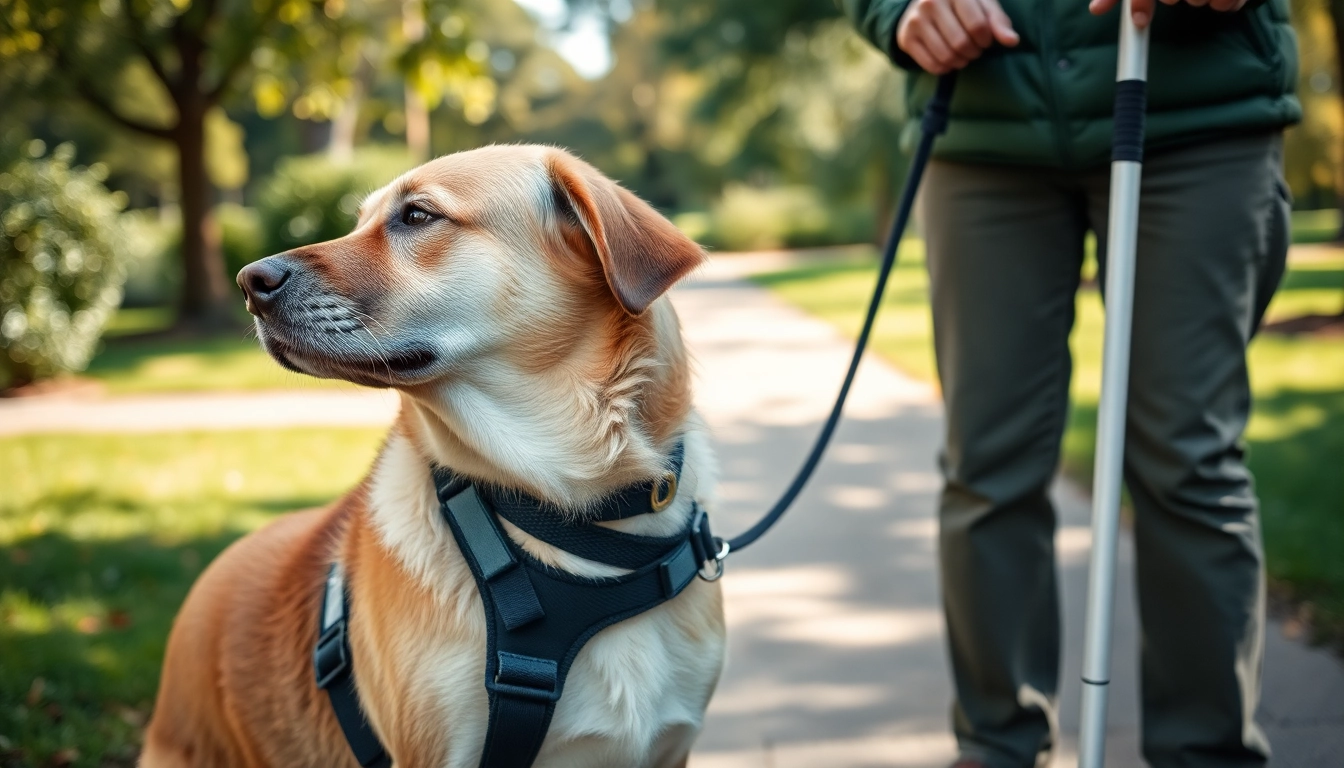What Are Service Dogs?
Definition and Purpose
Service dogs are not your ordinary pets; they are highly trained companions that play a crucial role in enhancing the quality of life for individuals with disabilities. Defined by the Americans with Disabilities Act (ADA), service dogs are dogs that are individually trained to do work or perform tasks for individuals with disabilities. This work is often directly related to the person’s condition, enabling them to live more independently and with greater confidence. The tasks performed by service dogs can vary widely—from guiding individuals who are visually impaired to alerting those who are deaf to sounds, or even picking up objects for those with limited mobility. Service dogs not only provide physical support but can also offer emotional assistance, profoundly impacting their handlers’ well-being.
Legal Framework Surrounding Service Dogs
The legal definition and protection of service dogs are enshrined in the ADA, which applies to both public and private spaces. Under this federal law, service dogs are allowed to accompany their handlers in most areas, including restaurants, hotels, and stores—places where pets are typically prohibited. However, it’s important to note that the ADA specifies that only dogs are recognized as service animals and that these dogs must be trained to perform specific tasks related to a disability. This legal framework not only acknowledges the vital role service dogs play but also ensures that individuals with disabilities have the freedom to navigate public spaces with their trained companions.
Types of Disabilities Addressed by Service Dogs
Service dogs assist individuals with a range of disabilities, including but not limited to:
- Visual Impairments: Guide dogs help individuals navigate their environment safely, avoiding obstacles and hazards.
- Hearing Loss: Hearing dogs alert their handlers to important sounds like alarms, doorbells, or a baby’s cry.
- Mobility Impairments: Service dogs can assist individuals with physical disabilities by retrieving items, pulling wheelchairs, or helping with balance.
- Psychiatric Conditions: Dogs can provide deep emotional support for individuals with PTSD, anxiety disorders, and other mental health challenges by offering comfort and grounding during distressing episodes.
- Seizure Disorders: Seizure alert dogs are trained to recognize and respond to seizures, providing alerts to handlers or others nearby.
Training Process for Service Dogs
Basic Training Requirements
The training process for service dogs is rigorous and comprehensive. It generally begins with basic obedience training, which is crucial for instilling essential commands like sit, stay, come, and leave it. A well-trained service dog must exhibit calm behavior in various environments, effectively managing distractions that may occur in everyday situations. Basic training can last several months, depending on the dog’s age and temperament, and serves as the foundation for more specialized training.
Specific Task Training
Once basic obedience is mastered, service dogs undergo specific task training tailored to the disabilities of their handlers. This advanced training can range from teaching a dog to retrieve medications to guiding a person in a busy environment. Each task is tailored to the individual’s specific needs, ensuring that the service dog can effectively support their handler. Training should be conducted by certified professionals who understand both canine behavior and the particular requirements of service dog work.
Ongoing Education and Adaptation
The training of service dogs doesn’t stop once they are paired with a handler. Ongoing education and adaptation are vital, as each individual’s needs may change over time. Regular refresher courses help reinforce learned behaviors, and further training may be necessary to teach new tasks or modify existing ones. This ensures that service dogs can continue to provide the highest level of support throughout their working lives.
Benefits of Service Dogs for Individuals
Physical and Emotional Support
Service dogs offer invaluable physical and emotional support to their handlers. Physically, they can assist with daily tasks that individuals may struggle with due to their disabilities, significantly enhancing independence. Emotionally, the presence of a service dog can help reduce anxiety and promote feelings of safety and security, particularly for those with mental health conditions. The deep bond that forms between a service dog and their handler often results in improved mental health outcomes, with many handlers reporting a decrease in loneliness and feelings of isolation.
Increased Independence and Quality of Life
The presence of a service dog can dramatically increase an individual’s independence. Tasks that may once have required assistance from others can become manageable with the help of a service dog. This increased autonomy not only fosters a sense of self-sufficiency but can also lead to a higher quality of life overall. Many individuals and families report that the integration of a service dog into daily life has changed their dynamics for the better, facilitating a greater sense of participation in social and community activities.
Case Studies of Successful Pairings
Several compelling case studies highlight the transformative effects of service dogs in the lives of their handlers. For example, a young woman with mobility challenges found new independence when paired with a service dog. The dog learned to assist her in navigating crowded areas and retrieving items she dropped. As a result, the woman reported greater emotional well-being and a desire to engage more actively with her community.
In another case, a veteran with PTSD experienced significant improvements in their mental health after acquiring a service dog trained specifically for psychiatric support. The dog helped by providing comfort during anxiety attacks and serving as a grounding presence in stressful situations. These stories underscore the profound impact service dogs can have, not just on the physical but also on the emotional quality of life of individuals with disabilities.
Common Misconceptions About Service Dogs
Differences Between Service Dogs and Emotional Support Animals
One of the most significant misconceptions about service dogs is the confusion between them and emotional support animals (ESAs). While both types of animals can provide comfort, only service dogs are trained to perform specific tasks related to a person’s disability. ESAs do not have the same legal protections as service dogs and are primarily intended to provide companionship. Understanding this distinction is crucial for both the general public and those seeking assistance from service animals.
Public Access Rights and Responsibilities
Service dogs have public access rights under the ADA, allowing them to accompany their handlers in most public spaces. However, it is essential for handlers to remain aware of their responsibilities. Service dogs must be trained to behave appropriately in public, and handlers are responsible for ensuring that their dogs are well-mannered and under control at all times. Misbehavior can result in the dog being denied access, highlighting the importance of proper training and socialization.
Misunderstandings Impacting Service Dog Users
Common misunderstandings can create negative experiences for service dog users. An example includes individuals questioning the need for a service dog or demanding to see certification, despite the ADA not requiring service dogs to wear vests or carry identification. Such intrusiveness can undermine the handler’s privacy and dignity. Increased public awareness and education about service dogs can help alleviate these misunderstandings and promote a more supportive environment for individuals relying on service dogs.
How to Acquire a Service Dog
Choosing the Right Organization for Training
Acquiring a service dog begins with selecting a reputable organization that specializes in training and placing service dogs. Potential handlers should look for organizations accredited by recognized bodies that ensure proper training standards and ethical practices. Researching the organization’s track record, success rates, and training methodologies can help prospective handlers make an informed choice.
Application Process for Service Dogs
The application process for obtaining a service dog often requires a comprehensive evaluation of the potential handler’s needs. Organizations may conduct interviews, medical assessments, and home visits to understand how a service dog can be best integrated into the individual’s life. This thorough assessment is critical to ensure that the match between the dog and handler meets all necessary requirements for a successful partnership.
Steps for Integrating a Service Dog into Daily Life
Once a service dog has been secured and trained, the next step is integrating the dog into daily life. This process involves acclimating both the handler and the dog to their shared environment. Gradual introductions to various places and situations can help reinforce training and build confidence. Handlers should also engage in ongoing training sessions and stay connected with the organization to ensure that both they and their service dog continue to thrive in their roles together.













Leave a Reply